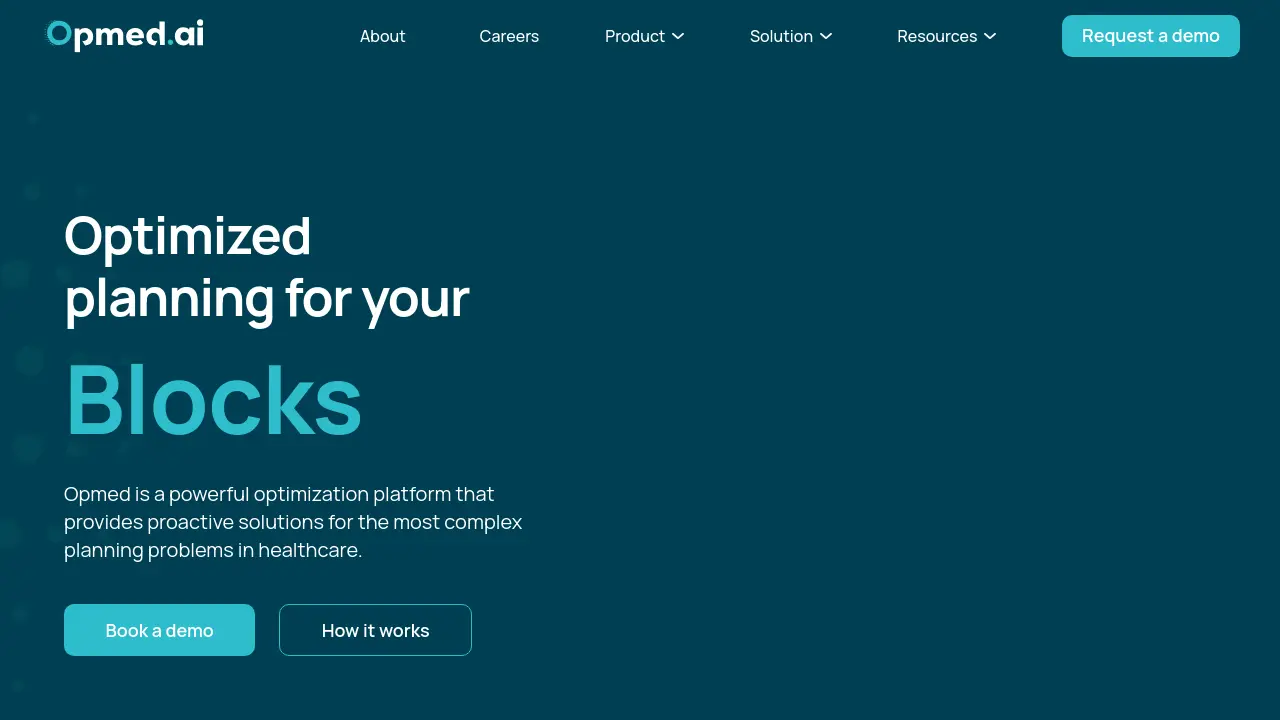Opmed
Optimized planning for healthcare complexities

Description
Opmed provides a sophisticated optimization platform engineered to tackle complex planning challenges within the healthcare industry. Utilizing artificial intelligence, it delivers proactive solutions designed to improve operational efficiency across various hospital departments and functions. The system integrates multiple planning tools to address organizational problems throughout the healthcare delivery process.
This platform focuses on transforming reactive scheduling into a strategic, AI-driven approach. It aims to enhance performance by creating robust and resilient plans capable of handling disruptions, ultimately benefiting staff, patients, and the organization's financial health through optimized resource allocation and scheduling across areas like operating rooms, PACU, and specialized procedures.
Key Features
- AI-powered optimization engine: Core technology driving healthcare planning and operations.
- Opmed Sidekick: AI assistant providing instant healthcare insights and reports.
- Opmed OR: Solution for complete OR scheduling optimization to maximize efficiency.
- Opmed Resources: Enables smart staff and equipment planning across the healthcare network.
- Opmed Procedure: Offers AI-driven NORA scheduling to improve efficiency and workflow.
- Schedule Builder: Tool designed for creating optimized healthcare schedules.
- Block Architect: Facilitates strategic OR block schedule planning.
- PACU Planner: Optimizes planning for the Post-Anesthesia Care Unit.
Use Cases
- Optimizing operating room (OR) schedules for maximum efficiency.
- Planning staff assignments and equipment allocation across healthcare facilities.
- Scheduling Non-Operating Room Anesthesia (NORA) procedures effectively.
- Managing Perioperative Care planning.
- Optimizing scheduling for Cath Labs.
- Coordinating planning for Rehabilitation services.
- Streamlining Inpatient Care planning.
- Load balancing patient cases and resources across multiple sites.
- Reducing operational costs through optimized room usage and staffing.
- Forecasting surgical case lengths with improved accuracy.
- Identifying and mitigating risks within OR schedules.
- Increasing resource utilization rates.
You Might Also Like
EngaugeAI
Free TrialTesting Tomorrow's Creative Insights, Today
TryHumanize
FreemiumNo-code AI app solution for long-form article generation.
EasySub
FreemiumAccurate AI Subtitle Generation, Transcription & Translation
Harken
FreemiumFind the Spotify songs you thought were lost!
Vary Content
FreeFree AI-Powered Content Repurposing Tool